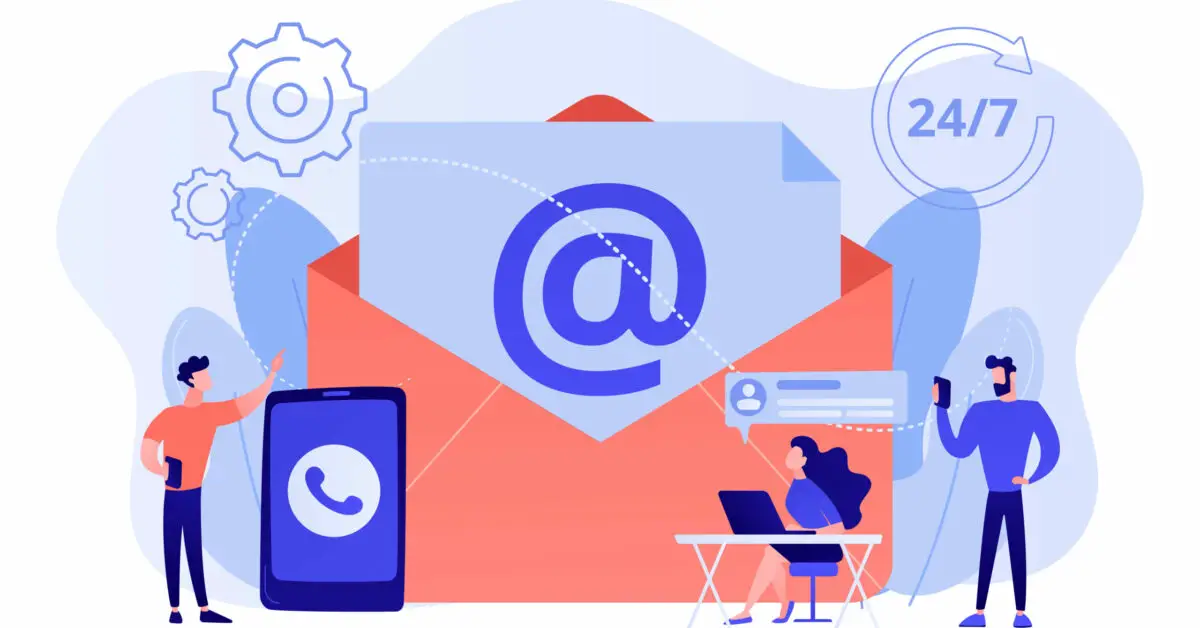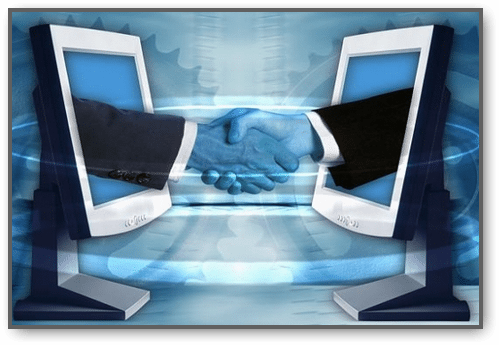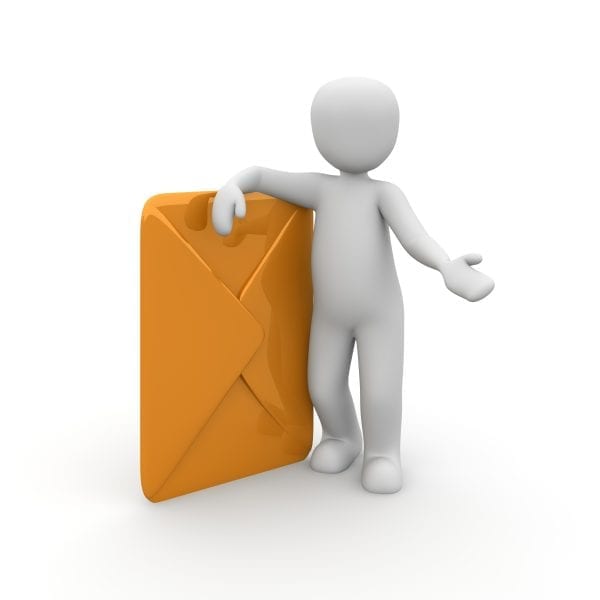Autoresponders guarantee customers their emails were received
One of the biggest reasons for setting up an autoresponder is that it gives your customers or consumers a clear notification that their email was received and when to expect a response if for whatever reason you can’t reply at that particular moment.
For a customer, it’s often nerve-wracking to send out an email and get no response for a while. An auto-response email, however little it holds can set that customer’s mind at ease, knowing their message was received and that a response is incoming.
Autoresponders makes it easier to respond to inquiries faster
The growth and credibility of some businesses are tied to how fast their responses are. Some businesses have ratings attached to them, and the ratings are dependent on how fast the business replies to customers. If your business fits this category, then for this sole reason alone, an autoresponder is exactly what you need.
Autoresponders also reduce the pressure of having to reply to inquiries immediately they come in. With an autoresponder, you can take your time to understand the inquiry and know the best response to give to that inquiry.
With that, an autoresponder is not the same as a personalized reply from you or anyone from your team. We’ll explain this as we go further.
Automated responses reduce the chances of duplicate emails
If a customer emails you and they don’t get a response from you, they may email again, try to reach you on social media, or in some cases go on Yelp or Google Reviews to give you a one star rating.
What an autoresponder does for you in a situation like this is to clear the clutter and remove the risk of having replied to the same person twice.
An autoresponder sates this customer by saying, we got your message and we’ll get back to you soon. With this, the customer is less likely to follow up on other social media channels. Unless in case of an emergency, read on to find out what to do.
Should you always have an autoresponder?
There isn’t a “one-size-fits-all” answer to this question. If done right, setting up an autoresponder is a great idea. But, when setting up an autoresponder, it’s better to have none than to have a terrible one.
If your autoresponder is monotonous, robotic and cold, it could create the impression that it’d take longer to get back to them and this can do more harm than good.
Setting up an autoresponder that doesn’t feel personal can make your customers feel left out and unattended to. In this case, it would be better to wait and reply with a more personalized email.
On a different note, if your email volume is low and you react to messages quickly (inside, say, 30 minutes or less), an autoresponder may be a pointless excess. On the off chance that you can react to all messages immediately (assuming this is the case, good for you!), you may not need an autoresponder. Or you may need one only for explicit sorts of requests that meet certain conditions, an example of this would include emails that come from your website when a user fills a form.
All things considered, there’s no last word on the issue. We’d contend that autoresponders are a great instrument and a great choice for almost all circumstances, yet that it’s smarter to not have one at all at that point have a terrible one.
Here are the things to remember when you set up an autoresponder, to ensure it’s aiding you and not harming your business

Make sure your autoresponder does not sound robotic
While an autoresponder message is a layout, the objective is to make it seem as personal as possible, and not like something that came from a robot. That doesn’t really mean acting like every response is custom, but make sure to add some personal touch to your content.
The core of a great autoresponder message is that it causes your clients to feel that they’re being listened to and that their concerns matter. If your response feels too mechanical, then it could be perceived worse than if a reply wasn’t sent at all.
How do you avoid this mistake then? When setting up your autoresponder, make sure it’s sincere and human.
Setting up your autoresponders to sound human is extremely important. In the same way your regular out of office is simply you telling people you’re going to be out of the office for a particular period of time.
If an autoresponder is coming from a customer service representative, it is important that your message reassures the customer in a way that they feel they made the right decision by contacting you and that they contacted the right channel.
When done effectively, automated messages should feel custom-made and tailored to make the recipient feel they’re sending a direct message to you or a member of your team.
The importance of setting up an autoresponder to make the person on the other end feel like their issue is being take care of cannot be overstated. A tip to do this is by starting off with your name and continuing the email with a tone of appreciation, care and overall kindness and attention.
Autoresponders shouldn’t be your only response
As said earlier, your autoresponder message shouldn’t have the perception that someone in your group sent it in a hurry.
One of the greatest mistakes you can make with an autoresponder is assuming it as a substitute for a quick, customized reaction. It’s similar to a “read” notice—a notice that you’ve gotten a customer’s email and would be follow up with the inquiry.
When properly done, an autoresponder should give your clients genuine feelings of tranquillity that you got their message, and get you an opportunity to respond properly at a later time with a more detailed, encompassing, and personalized email. An auto-responder is not an actual response and it should not be treated as such.
If your business primarily involves providing customer support, then personalized, detailed and helpful replies should always be what you aim for. Do not make the mistake of replacing this with an autoresponder- it can only do so much.
Set a stipulated time to expect a response and stick to it
How long will it take you to respond to an email enquiry? An hour? A day?
If you know the exact time it’ll take to reply to an enquiry, then you’ve gotten your response time down.
If you’re not sure of your response time, don’t give a specific time frame in your autoresponder email. In a case like this, it is better to keep things vague.
Reply that their emails have been gotten and that you’ll get back to them as soon as possible.
Don’t tie yourself to a specific time. Giving a time frame for a reply and not meeting up is not realistic and could hinder your brand in the long run.
Do not prep yourself up for failure. It is important to reply within a stipulated time frame is any was specified.
In your response, state what to do in case of an emergency
In some cases, a customer has to get in touch with you ASAP. If the emails you receive often need immediate attention, make sure to specify what a customer should do in a situation like that.
If you can be contacted through one medium (which is not advised if your inquiries are often emergencies), state this in your autoresponder email. If you have other channels to get in touch with that have a higher response rate, make sure to specify while setting up your autoresponder emails for cases of emergencies.
To check out a sample on how to write a responder email in case of an emergency, read this blog post.
Why should you make this clear? This is because in case of an emergency, if a customer does not get a response as soon as possible, they may become frantic and look for other means of fixing the problem, or they would constantly contact you until you either respond to them or proffer a solution.
By alerting them what to do in case of an emergency, you cut down the chances of them constantly trying to contact you wherever they can.
Customers who have an emergency are often quick to leave negative reviews that could lead to you doing damage control. But replying to their email with a set of instructions to follow in case of an emergency helps prevent this.
Finally, setting up an autoresponder could be a huge benefit for your business if they’re done properly. When setting up an autoresponder, make sure it feels human, it’s helpful and is not used to replace an actual reply.
If done properly, an autoresponder helps in the quality of emails you send out, how helpful and detailed your responses are. Lastly, it enables you to provide a better experience and helps you serve your customers better.
Autoresponder tools.






